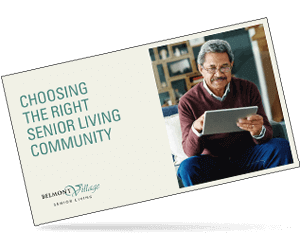As the New Year unfolds, many of us are striving to adopt new healthy habits or make resolutions that change our lives for the better. One area that we often forget to focus on is our own mental health. Fortunately, January is a month dedicated to Mental Wellness, with the aim of empowering people to prioritize their mental well-being by fostering self-awareness, seeking support, and engaging in activities that promote emotional resilience. Mental Wellness Month emphasizes the significance of open conversations, self-care, and support in maintaining a healthy mind and reminds us that our mental health is just as important as our physical health.
While investing more time and energy into our mental wellness is a valuable practice for all of us, long-term caregivers and their loved ones can especially benefit.
The importance of mental health and well-being for caregivers
Caregivers are the estimated 44 million Americans age 18 and older who provide unpaid assistance and support to older people and adults with disabilities. This group now includes more people caring for an aging parent or spouse than ever before. Family caregivers are often delivering round-the-clock care, which can be physically, mentally, emotionally, and financially draining. In fact, according to an NIH study, “caregiving fits the formula for chronic stress so well that it is used as a model for studying the health effects of chronic stress.”
Over time, the demands of caregiving take a toll on mental health. Studies consistently report higher levels of depressive symptoms and mental health problems among caregivers than among their non-caregiving peers.
Self-care comes with caregiver guilt
While most segments of the population may find it difficult to spend the time and energy needed to support their mental health, caregivers in particular struggle to do so. Many caregivers feel guilty prioritizing their own health and wellness, because they often feel that it takes time away from caring for their loved one. Instead, they tend to continue to constantly attend to the needs of others without allocating time for their own personal well-being, which can lead to burnout, stress, and exhaustion.
Developing a plan that gives you time for yourself ultimately benefits everyone
In reality, taking breaks, seeking social support, and engaging in activities that bring joy and relaxation are essential for you to recharge and maintain your resilience. By investing in your own health, you reduce the risk of burnout and feel more refreshed—and are able to provide more meaningful care for your loved one.
In addition to receiving better-quality care, your loved one can also benefit from the increased social engagement that occurs when you allow others to step in and shoulder more of the responsibility. Caregiving can be isolating for both parties, who default to the same routine day after day in an effort to make things as easy as possible. When a caregiver steps away, their loved one finds themselves engaging with a broader community and forming new social connections. Studies have found that older adults who interacted with people beyond their usual social circle of family and close friends were more likely to have higher levels of physical activity and greater positive moods.
HOW TO CHOOSE THE RIGHT SENIOR LIVING COMMUNITY FOR YOU
Learn about the amenities and services that different types of senior living choices provide throughout the continuum of senior care. And get insider tips on what to look for and some important questions to guide your decision-making.
Find time for yourself in your day-to-day
Start prioritizing your mental wellness by thinking of ways you can fit personal time into your existing schedule. Perhaps there are opportunities for you to build in regular physical activity, which not only contributes to the well-being of your body but also serves as a powerful stress-reliever. Equally important is cultivating social connections. Take the time to connect with friends and family, organize outings, and lean on your social network for support. Lastly, establish clear boundaries for yourself and your care partners. While caregivers often feel the pressure to be constantly available, it’s crucial to carve out time for personal responsibilities and self-care. Recognizing the value of these practices enhances your overall health and equips you with the resilience needed to navigate the demands of caregiving.
Explore respite care
Respite care holds immense value in the realm of caregiving, providing a crucial lifeline for caregivers. This specialized form of support offers you the opportunity to take a temporary break, allowing you to recharge, address your personal needs, and alleviate the physical and emotional strains associated with continuous caregiving. Respite care can last anywhere from a few hours to several weeks, giving you time to rest, travel, or spend time with other family and friends. This form of care can be provided in the home, at an adult day care center, or in a senior living community—which can also serve as a way to “try out” more long-term care options.
HOW TO CHOOSE THE RIGHT SENIOR LIVING COMMUNITY FOR YOU
Learn about the amenities and services that different types of senior living choices provide throughout the continuum of senior care. And get insider tips on what to look for and some important questions to guide your decision-making.
Partner with a senior living community for your care team
A senior living community removes much of the burden of day-to-day care from caregivers, allowing you to spend quality time with your loved one the way you used to—as a daughter, son, spouse, or friend again. In addition, senior living communities provide more opportunities for daily social interaction, mental stimulation, and physical activity for your loved one to maintain mental and physical health and to help delay the progression of cognitive decline.
A senior living community can be a great option for a range of caregiver relationships, even a spouse caring for a partner with differing needs. At communities like Belmont Village, spouses with differing care needs are able to continue to live together, even if one spouse needs some memory care support and the other is able to live more independently.
Changing the way in which you provide care to your loved one can feel overwhelming and produce feelings of anxiety. However, it’s important to note that, for many caregivers, providing long-term, round-the-clock care takes an increasingly large toll on mental and physical health. Caring for oneself ultimately translates to better mental wellness, more sustainable care for your loved one, and more fulfilling time spent together.
Learn more about your options
Our guide to Choosing Senior Living allows you to learn about the many types of senior living options available, the signals that it’s time to consider this as an option for you or your family, and what to look for and expect in a senior living community.
If you’re interested in talking to one of our family advisors about respite or full-time care for your loved one, please click here.


